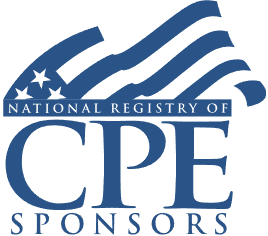Preparing Form 4797, Sales of Business Property: Minimizing Tax on Dispositions
Calculating Unrecaptured Section 1250 Gain, Section 1231 Lookback, Related Forms and Elections

Course Details
- smart_display Format
On-Demand
- signal_cellular_alt Difficulty Level
Intermediate
- work Practice Area
Tax Preparer
- event Date
Tuesday, February 11, 2025
- schedule Time
1:00 p.m. ET./10:00 a.m. PT
- timer Program Length
110 minutes
-
BARBRI is a NASBA CPE sponsor and this 110-minute webinar is accredited for 2.0 CPE credits.
-
BARBRI is an IRS-approved continuing education provider offering certified courses for Enrolled Agents (EA) and Tax Return Preparers (RTRP).
This webinar will detail the steps needed to report various gains and losses on Form 4797, Sales of Business Property, with primary consideration given to minimizing the overall tax paid by taxpayers reporting dispositions. Our authoritative panel will explain reporting differences between specific property types, how and when Section 1245 and Section 1250 recapture is calculated, and the Section 1231 lookback rules.
Faculty

Mr. Lovett has extensive experience serving the tax needs of both public companies and closely-held businesses, including all aspects of tax compliance for partnerships and corporations. He advises clients with regard to the structure and tax consequences of new business ventures, and assists with restructuring existing businesses for increased tax efficiency. Prior to joining his firm, he was with a “Big 4” accounting firm, working closely with large, multinational real estate investment companies.

Ms. Palovick specializates in real estate, and focuses most of her time in the areas of partnership and individual taxation. She assists in all areas of compliance as well as tax planning and succession planning.
Description
Form 4797, Sales of Business Property, is one of the most complex but necessary forms practitioners prepare. Sales of intangible and tangible property are reported here, along with the calculation of the related gains and losses, including depreciation and Section 179 recapture. Calculating, separating, and reporting these gains and losses, and determining how much of a gain or loss is taxed as ordinary, capital, Section 1231, 1245, 1250, or other type gain is critical.
The dispositions reported on Form 4797 often warrant additional reporting and calculations on related forms. Tax saving elections for like-kind exchanges, installment sales, and investments in qualified opportunity funds require calculations in addition to those on Form 4797. Determining where the calculated amounts on Form 4797 flow and which additional forms are needed can be daunting.
Listen as our panel of federal tax experts walks you through the preparation of Form 4797, Parts I-IV, and the calculation and considerations surrounding reporting business gains and losses.
Outline
- Form 4797, Sales of Business Property
- Types of gains
- Ordinary vs. capital
- Section 1245, 1231, 1250
- Recapture
- Section 179
- Depreciation
- Related reporting requirements
- Form 8824, Like-Kind Exchanges
- Form 6252, Installment Sale Income
- Opportunity funds
- Other
- Completing Form 4797
Benefits
The panel will cover these and other critical issues:
- Calculating unrecaptured Section 1250 on property sales
- Preparing Part III of Form 4797 and calculating Section 1245 and 1250 gains
- How deferred gains on qualified opportunity fund sales are calculated and reported
- Calculating Section 179 recapture on depreciable assets
NASBA Details
Learning Objectives
After completing this course, you will be able to:
- Determine unrecaptured Section 1250 gain on real estate sales
- Identify Section 1231 property
- Ascertain specific elections that are available to reduce gains on the sale of property
- Decide when recapture of Section 179 expense is required
- Field of Study: Taxes
- Level of Knowledge: Intermediate
- Advance Preparation: None
- Teaching Method: Seminar/Lecture
- Delivery Method: Group-Internet (via computer)
- Attendance Monitoring Method: Attendance is monitored electronically via a participant's PIN and through a series of attendance verification prompts displayed throughout the program
- Prerequisite: Three years+ business or public firm experience preparing complex tax forms and schedules, supervising other preparers or accountants. Specific knowledge and understanding of pass-through taxation, including taxation of partnerships, S corporations and their respective partners and shareholders.

Strafford Publications, Inc. is registered with the National Association of State Boards of Accountancy (NASBA) as a sponsor of continuing professional education on the National Registry of CPE Sponsors. State boards of Accountancy have final authority on the acceptance of individual courses for CPE Credits. Complaints regarding registered sponsons may be submitted to NASBA through its website: www.nasbaregistry.org.

Strafford is an IRS-approved continuing education provider offering certified courses for Enrolled Agents (EA) and Tax Return Preparers (RTRP).
Unlimited access to premium CLE courses:
- Annual access
- Available live and on-demand
- Best for attorneys and legal professionals
Unlimited access to premium CPE courses.:
- Annual access
- Available live and on-demand
- Best for CPAs and tax professionals
Unlimited access to premium CLE, CPE, Professional Skills and Practice-Ready courses.:
- Annual access
- Available live and on-demand
- Best for legal, accounting, and tax professionals
Unlimited access to Professional Skills and Practice-Ready courses:
- Annual access
- Available on-demand
- Best for new attorneys
Related Courses

Admitting New Partners: Tax Consequences
Friday, May 30, 2025
1:00 p.m. ET./10:00 a.m. PT

Key Issues in Succession Planning: Buy-Sell Agreements, Equity Grants, Profits Interests, Tax Considerations
Tuesday, June 17, 2025
1:00 p.m. ET./10:00 a.m. PT
Recommended Resources
How CPE Can Bridge the Gap Between What You Know and What You Need to Know
- Career Advancement